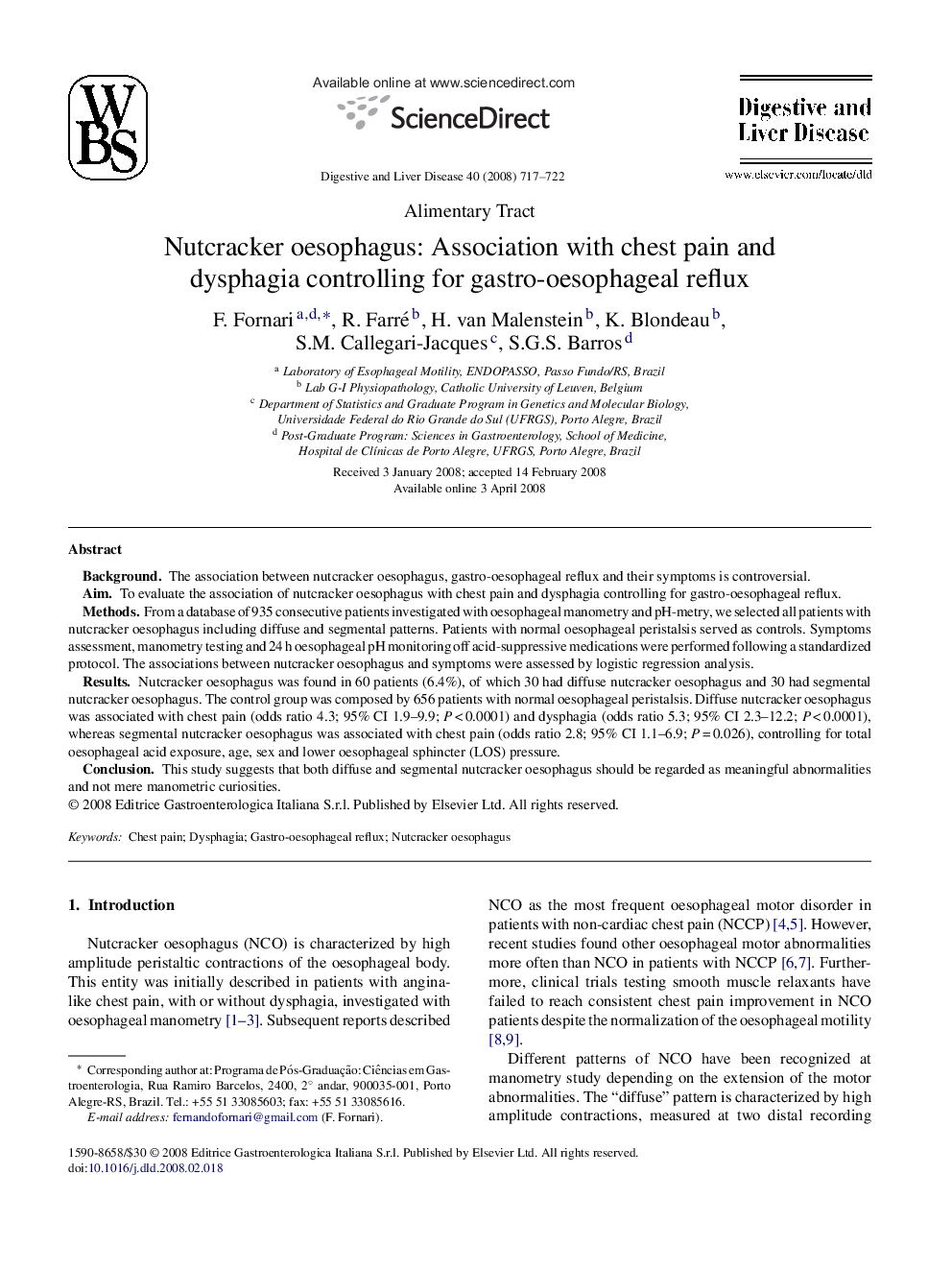| Article ID | Journal | Published Year | Pages | File Type |
|---|---|---|---|---|
| 3265098 | Digestive and Liver Disease | 2008 | 6 Pages |
BackgroundThe association between nutcracker oesophagus, gastro-oesophageal reflux and their symptoms is controversial.AimTo evaluate the association of nutcracker oesophagus with chest pain and dysphagia controlling for gastro-oesophageal reflux.MethodsFrom a database of 935 consecutive patients investigated with oesophageal manometry and pH-metry, we selected all patients with nutcracker oesophagus including diffuse and segmental patterns. Patients with normal oesophageal peristalsis served as controls. Symptoms assessment, manometry testing and 24 h oesophageal pH monitoring off acid-suppressive medications were performed following a standardized protocol. The associations between nutcracker oesophagus and symptoms were assessed by logistic regression analysis.ResultsNutcracker oesophagus was found in 60 patients (6.4%), of which 30 had diffuse nutcracker oesophagus and 30 had segmental nutcracker oesophagus. The control group was composed by 656 patients with normal oesophageal peristalsis. Diffuse nutcracker oesophagus was associated with chest pain (odds ratio 4.3; 95% CI 1.9–9.9; P < 0.0001) and dysphagia (odds ratio 5.3; 95% CI 2.3–12.2; P < 0.0001), whereas segmental nutcracker oesophagus was associated with chest pain (odds ratio 2.8; 95% CI 1.1–6.9; P = 0.026), controlling for total oesophageal acid exposure, age, sex and lower oesophageal sphincter (LOS) pressure.ConclusionThis study suggests that both diffuse and segmental nutcracker oesophagus should be regarded as meaningful abnormalities and not mere manometric curiosities.
